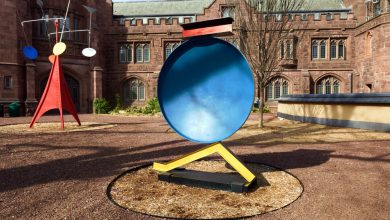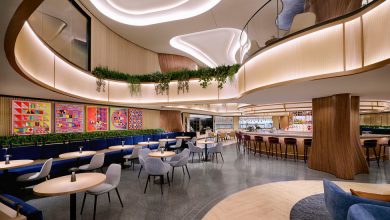Taking the Loop Less Traveled on the Oregon Coast

The tiny hamlet of Netarts, Ore., protected by a long spit of sand from the Pacific Ocean’s churn, is so small you might miss it if you didn’t know it was there. But on a Saturday morning in October, Netarts Bay was alive with small motorboats and kayaks, whose occupants were searching for the delectable crabs and scallops that thrive in its briny waters, as the oystermen waited for low tide.
A gray-haired man in jeans and Birkenstocks was walking his dog at the water’s edge. Notebook in hand, I asked him about his favorite spots on this often overlooked stretch of Oregon’s rugged coast. He wouldn’t bite.
“Who would give that up?” he asked, shaking his head.
Netarts, whose oysters are prized by restaurateurs, is one of several hidden gems on the Three Capes Scenic Loop — a winding 40-mile drive along windswept cliffs, through towering forests of centuries-old Sitka spruce overlooking ribbons of sand, and past dairy farms and charming beach towns. The drive alone is spectacular, but each of the capes — Cape Meares, Cape Lookout and Cape Kiwanda — is a treasure unto itself, with its own distinctive ecosystem, hikes and wildlife.
Because driving the loop requires leaving the main north-south highway, U.S. 101, many visitors zip right past it, missing some of the most spectacular views and natural landscapes the West Coast has to offer.
My husband, the photographer Scott Robinson, and I discovered the loop on a recent two-week camper van trip through Oregon. Scott is obsessed with the #vanlife movement, and for our Oregon adventure, we rented a 19-foot RAM Promaster with knotty pine paneling, butcher block countertops and its own name — Carmen — through an outfit called GoCamperVans.com, which operates kind of like Airbnb for vans. We flew to Portland, picked up Carmen from her owners and headed for the coast. The goal was to unplug and slow down.
Our first two stops, Astoria and Cannon Beach, are on many Oregon Coast itineraries, but neither provided the kind of quiet we were yearning for. That did not come until we hit the small city of Tillamook, about 40 miles south of Cannon Beach along Highway 101, and took a right turn toward the sea.
The three capes form a good chunk of what Oregonians refer to as the “Tillamook Coast,” after the city that is best known for its creamery (a major tourist attraction here), and other purveyors of cheese, like the Blue Heron French Cheese Company, which also has a petting farm for the kids — and a peacock that strolls the property. We stopped there at the end of our three capes tour.
s
We had already been alerted that there is a break in the scenic loop at its northernmost point, Cape Meares, where a landslide has sadly forced the closure of a portion of the road. That kept us from heading north to the site of what once was Bayocean, known to locals as “the town that fell into the sea.”
Although we missed it, Bayocean’s history is worth mentioning — a testimony to the power of nature to put humans in their place.
In the early 1900s, developers seeking to create the “Atlantic City of the West,” built an entire resort town on a sliver of land that stretches north from Cape Meares, separating the Pacific from Tillamook Bay. That town, Bayocean, had a luxury hotel, a bowling alley, a natatorium and even a railroad. But by the 1950s much of Bayocean, battered by storms and beach erosion, had washed away, its ruins later bulldozed. Today not a single building is left.
Our first stop on the loop was the lighthouse at Cape Meares, the shortest lighthouse on the Oregon coast. We raced to get to the scenic viewpoint just as the sun was setting, and found a handful of other visitors, including some lighthouse aficionados who marveled at the unusual cherry-colored panels of its French-made Fresnel lens.
The interior of the lighthouse is off-limits to tourists because of the pandemic, but the point on which it stands is a perfect spot to look for the gray whales that migrate along the coast, or — if you are lucky and there at the right time of year — the peregrine falcons that nest on the cliffs in the spring.
A short walk from the lighthouse is an oddity of the coast: a 105-foot tall, 14-foot wide giant Sitka spruce known as “The Octopus Tree of Oregon.” The tree, believed to be 200 to 300 years old, has no central trunk; instead, its many trunks branch out horizontally before turning upward, candelabra style, to the sky. One theory holds that the massive spruce was shaped that way by the Tillamook people, the Native Americans who once occupied this land.
Shellfish lovers will find paradise along the Three Capes Scenic Loop; Netarts Bay is home to a string of oyster farms, including Netarts Bay Oyster Company; Nevor Shellfish Farm, whose retail shop is open every day from noon to five, and JAndy Oyster Co., a small family run operation that recently opened a tasting bar in nearby Tillamook.
Todd Perman, who founded JAndy in 2012 after a career in forestry and describes himself as a “first-generation oyster farmer,” says his oysters are “hand-harvested — everything we do is on our hands and knees.”
But the secret, he said, is the bay itself: “Our oysters grow in ocean water; there are no fresh water rivers running into Netarts Bay and that makes the water more pristine.”
That pristine water has also given rise to an artisanal salt company, Jacobsen Salt, which bills itself as “the first company to harvest salt in the Northwest since Lewis & Clark.” Gourmets can catch a glimpse of the Jacobsen operation by dropping into the little blue shack that functions as the company’s retail store; we did just that, and left with a jar of flaky Lemon Zest Salt and two boxes of to-die-for Salty Chocolate Caramels.
Shellfish and salt notwithstanding, the scenic loop is more for nature lovers than foodies. But after our stop at Cape Meares, we shared a delightful dinner in the nearby town of Oceanside at a bustling family restaurant, Roseanna’s Cafe, where oysters, clams and scallops — and Oregon wines — feature heavily on the menu.
By the time dinner was over, it was dark — way too dark to look through the restaurant windows and see what we knew was in the ocean: the Three Arch Rocks National Wildlife Refuge. This small collection of rocky islands, established by President Theodore Roosevelt in 1909 at the urging of a pair of conservationist photographers, provide a summer breeding ground for the Stellar sea lion, which is on the threatened species list.
We drove down the coast to settle in for the night in the campground at Cape Lookout State Park, on that same sand spit that curves around Netarts Bay. Oregon has a fabulous state parks system, with well-manicured trails and clean, Covid-conscious facilities. Cape Lookout, where we spent two nights, was no exception. The hot showers were especially welcome; Carmen the van, we discovered, had an outdoor shower but no hot water and no toilet.
There was a light rain in the morning; the van was outfitted with a camp stove, pots, pans and other kitchenware, so we boiled some water to make oatmeal and tea. Our campsite was right next to the short trail that led to the beach; after breakfast we wandered there and had the place almost entirely to ourselves. While there, we could hear the gurgling of nearby Jackson Creek, an important habitat for chinook and coho salmon.
Then we headed back to the van, packed a picnic lunch and prepared for the business of the day: a hike to Cape Lookout.
The Oregon Coast Trail from the campground to the cape was closed, so we drove about 10 minutes to the start of the Cape Trail. The hike from there, about five miles to the tip of the cape and back, is rated as moderate, with an elevation gain of 810 feet. It was also pretty muddy, and challenging at times, but the sweeping view of the coastline from high up in the forest could not be beat.
Cell service was scant in the area, so it was tough to do planning on the fly. Luckily, while on the trail we met a couple of return visitors to the region, Jennie Chamberlin and Jess Firestone of Portland, who gave us tips on other spots, including what to expect at the third cape, Cape Kiwanda, a “sandstone headland” — a cliff that is being constantly eroded and reshaped by the ocean crashing into it.
A steep climb up its dunes offers a dramatic vista of the waves crashing into the rocks. But a warning: Don’t go beyond the safety fence that runs along the cliff. The cliff can — and has — crumbled underneath people, sending them to their deaths.
“Cape Kiwanda,” said Ms. Firestone, “is like walking on the moon.”
We laid eyes on Cape Kiwanda after our Cape Lookout hike. Too tired to climb the dunes, we opted for dinner at the Pelican Brewing Company’s flagship site in nearby Pacific City, which advertises itself as Oregon’s only craft brewery “born on the beach.”
Not to be outdone by Cannon Beach, Pacific City has its own Haystack Rock, which at 327 feet above sea level, is Oregon’s tallest. The U.S. Fish and Wildlife Service says the two Haystacks are “contemporaries (give or take several million years), born from similar volcanic origins.”
Ms. Firestone and Ms. Chamberlin, also tipped us off to Short Beach, which is tucked in a cove between Oceanside and Cape Meares, and is known for the nuggets of agate, jasper, quartz and petrified wood that lie beneath its smooth black rocks.
Short Beach is also known as the Hundred Step Beach, presumably for the wooden steps visitors must walk from the main road to get to it. While there, I did a little digging and unearthed some bits of agate and other mineral treasures. The sound of the ocean raking across rocks at Short Beach was a clattering unlike any I have ever heard.
But finding the beach was a bit of a challenge. A small sign marks the trail that leads down the steps and through a forest to the half-mile stretch of beach below. There is no parking lot, and only a limited number of spots along the side of the road.
“It’s sort of hidden,” Ms. Chamberlin said, summing up the theme of our Three Capes trip. “You have to be pretty motivated to go there.”

52 Places to Love in 2021
We asked readers to tell us about the spots that have delighted, inspired and comforted them in a dark year. Here, 52 of the more than 2,000 suggestions we received, to remind us that the world still awaits.
Follow New York Times Travel on Instagram, Twitter and Facebook. And sign up for our weekly Travel Dispatch newsletter to receive expert tips on traveling smarter and inspiration for your next vacation. Dreaming up a future getaway or just armchair traveling? Check out our 52 Places list for 2021.




